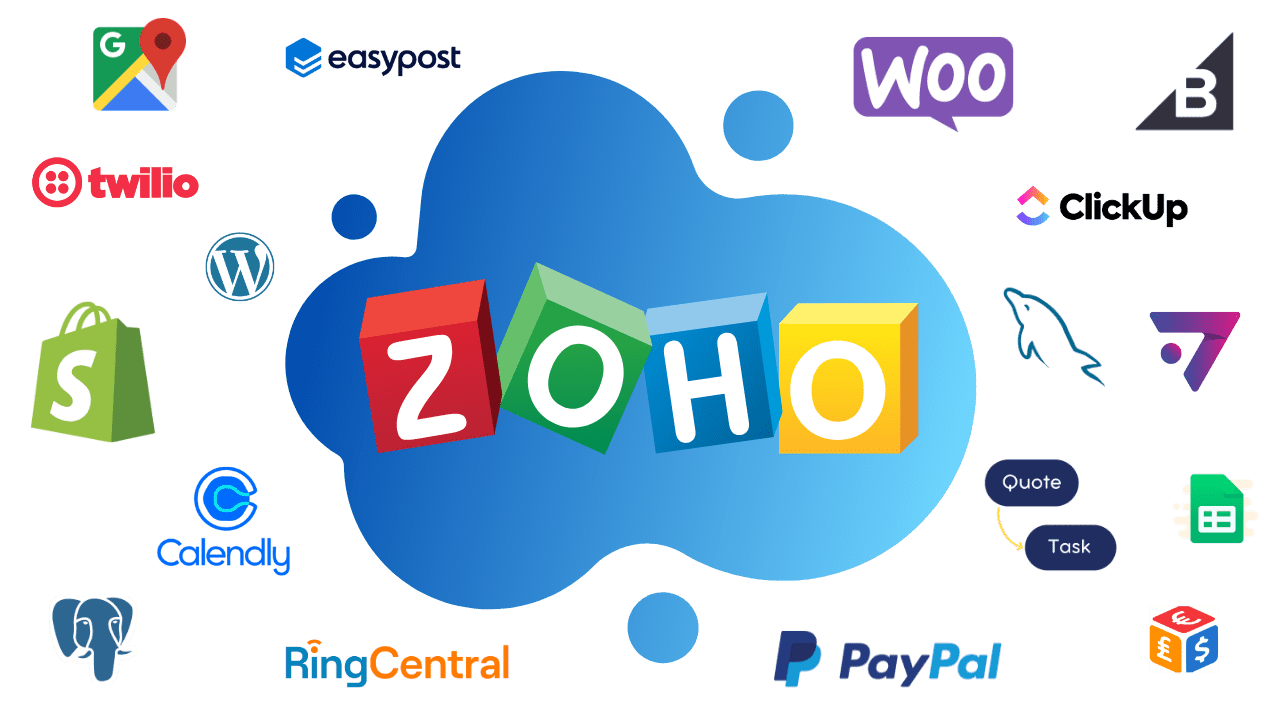
In today's fast-paced business environment, efficiency and productivity are paramount. Businesses rely on a multitude of tools and software to streamline their operations, and integrating these tools seamlessly is crucial for maximizing their benefits. When it comes to business automation and process management, Zoho stands out as a comprehensive suite of applications. In this blog post, we'll explore the importance of integrating Zoho with your existing tools and provide actionable tips for achieving seamless integration.
Why Integration Matters?
Efficient integration between Zoho and your existing tools can save time, reduce manual effort, and eliminate the need for duplicate data entry. It enables data synchronization, centralizes information, and enhances collaboration across different systems. Whether you use popular platforms like G Suite, Office 365, or other third-party applications, integrating them with Zoho can bring numerous benefits to your business.
Assessing Your Integration Needs:
Before embarking on the integration journey, it's crucial to evaluate your specific integration needs. Identify the tools and applications your team relies on for various processes such as sales, marketing, customer support, finance, and project management. Consider the data flow, key touchpoints, and areas where automation can significantly improve efficiency. This assessment will help you prioritize integration efforts and determine the most impactful integration points.

Understanding Integration Options:
Zoho provides multiple integration options to accommodate diverse business requirements. Some popular integration methods include:

Step-by-Step Integration Process
- Define Integration Objectives: Clearly define the objectives you want to achieve through integration. For example, syncing contact information, automating lead capture, or centralizing communication.
- Select the Integration Method: Based on your assessment, choose the integration method that aligns with your requirements. Determine whether a pre-built integration, API-based integration, or third-party integration tool is most suitable for your needs.
- Plan Integration Flow: Map out the data flow between systems, considering triggers, actions, and data mapping. Design a logical integration flow that optimizes processes and minimizes data discrepancies.
- Test and Validate: Prior to deploying the integration, conduct thorough testing to ensure data consistency, proper functionality, and error handling. Validate the integration in real-world scenarios and make necessary adjustments as needed.
- Monitor and Maintain: After integration, establish a monitoring system to track data integrity and system performance. Regularly review and update the integration to accommodate evolving business needs and system updates.
Benefits of Seamless Integration:
- Enhanced Efficiency: Reduce manual work, eliminate duplicate data entry, and streamline processes by automating data transfer and synchronization.
- Improved Data Accuracy: Minimize errors and data discrepancies by ensuring consistent and up-to-date information across systems.
- Unified View: Gain a comprehensive view of customer interactions, projects, sales pipelines, and other business data by consolidating information from multiple tools.
- Streamlined Workflows: Enable teams to collaborate seamlessly by integrating communication tools, project management platforms, and customer support systems.
- Scalability and Growth: Integration lays the foundation for scalability and future growth. As your business expands, integrated systems can adapt and accommodate increased volumes and complexities.
Conclusion
Seamlessly integrating Zoho with your existing tools is key to unlocking the full potential of your business operations. By assessing your integration needs, understanding the available options, and following a systematic integration process, you can achieve a cohesive and efficient ecosystem of interconnected tools. Embrace the power of integration to streamline processes, enhance collaboration, and drive productivity across your organization with Zoho as the central hub of your business automation toolkit.






